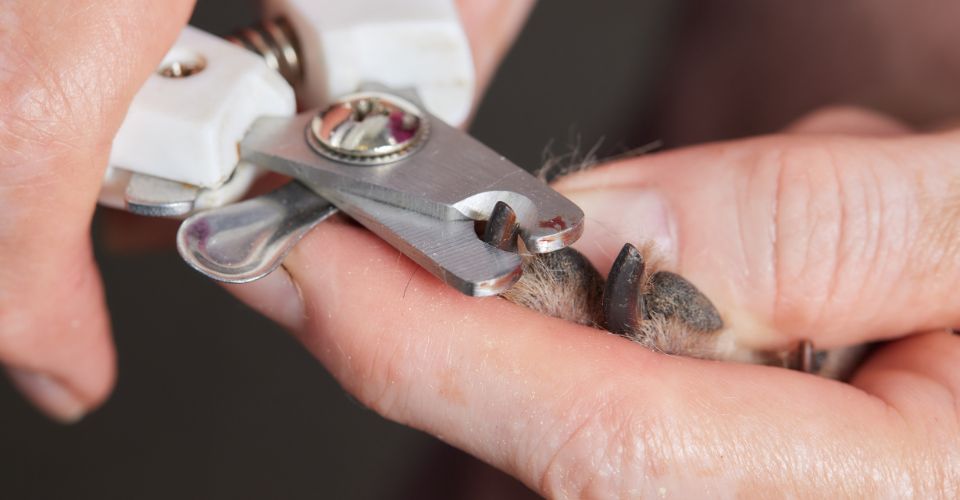Bell peppers have been around for centuries, and we are quite into them without any limitation of time and space. If you have ever had a chance to feed your doggo some bell pepper, you would have probably noticed that he liked it the same way as we do. This might have made you think: Can dogs eat bell peppers?
If your dog likes them, should you be complacent with him eating bell peppers? What could be the consequences?
We will find out the answers here!
Can Dogs Eat Bell Peppers?
A straightforward answer is yes, dogs can eat bell peppers. They are packed with several useful vitamins, minerals, antioxidants, and numerous carotenes and are a good casual treat for your dog.
Bell peppers come in four main colors: red, orange, yellow, and green. They can also be found in the shades between any two of these colors. While dogs can eat bell peppers of all colors, the red one takes the lead, as it is the most nutritious of all. In fact, a red bell pepper has 11 times more beta-carotene and about one and a half times more vitamin C than a green one.
Although bell peppers are a safe eatery, a wholesome food, you must be conscious of some facts and recommendations before feeding your dog this vegetable.
Is There any Difference Between Bell Pepper, Chili Pepper, and Capsicum?
There is no difference between bell peppers and capsicum. All names refer to the same vegetable in different regions of the world. For instance, in India and Oceania, it is known as capsicum; in Europe, chili pepper; and in North America, bell pepper.
The word capsicum is also the scientific name of the genus of the flowering plants that produce this vegetable.
The Benefits of Dogs Eating Bell Peppers
According to WebMD, a cup of bell pepper contains the following nutrients:
| Nutrients | Quantity (grams) |
|---|---|
| Calories | 30 |
| Protein | 1 |
| Fat | Less than 1 |
| Carbohydrates | 7 |
| Fiber | 2.5 |
| Sugar | 3.5 |
Bell peppers are, all in all, a great source of several nutrients that can have various health benefits for your dog. They contain carbohydrates and sugars that provide energy to him. Likewise, a variety of vitamins ensure the proper functioning of different organs and systems, ensuring better overall health. Moreover, the minerals and other components of bell peppers make sure that your dog does not catch any chronic disease or disorder that may harm his general well-being.
Bell Pepper Nutrients and the Benefit of Each for Dogs
| Nutrient | Benefits |
|---|---|
| Carbohydrates | It can provide energy. |
| Vitamin A | It has benefits for the eyes, structure, immunity, and overall health of your dog. |
| Vitamin B6 | It can work wonders for metabolism and bladder health. It also provides for the better functioning of the dogs’ nervous system. It is especially recommended for pregnant dogs. |
| Vitamin C | It supports the immune system; provides relief to dogs suffering from urinary tract infections; supports healthy aging in dogs; reduces inflammation; is an oxidant that fights free radicals. |
| Vitamin E | It supports the proper functioning of muscles, eyes, and the reproductive system; helps against oxidative damage; essential for cell function and fat metabolism. |
| Vitamin K1 | It ensures better and quick blood clotting. |
| Folate | It controls the blood level and properly utilizes amino acids. |
| Beta-Carotene | It is an antioxidant useful for a healthy immune system. It also converts into vitamin A. |
| Potassium | It is a desirable mineral for a healthy heart. |
| Iron | It is essential for oxygen transfer in the body, thus decreasing the risk of anemia. |
| Capsanthin | Fights against cancer. |
| Violaxanthin | It is an antioxidant, fighting free radicals. |
| Luteolin | It supports various body functions. |
| Dietary Fibers | Fibers are beneficial for smooth digestion and a healthy stomach. Besides, they can cleanse the teeth as well. |
Health Risks of Dogs Eating Bell Peppers
Although bell pepper is a great vegetable to be a part of your dog’s diet and looks pretty much innocuous, the following are some of the health risks associated with dogs eating bell peppers.
Capsanthin May Cause Some Complications
Since bell peppers are rich in capsanthin, eating too much of them can have implications for your dog. In the short term, it should not cause any problem other than stomach irritation and a runny nose; however, in the long term, it can give rise to different types of stomach disorders and can cause various mouth and skin irritations.
Fiber Can Produce Gas in Stomach
Fiber constitutes a considerable portion of bell pepper. Nevertheless, too much intake is associated with several stomach problems. A healthy daily diet for your dog should not have more than 2 to 4 percent of the fiber, excess of which can lead to certain issues, such as gas, bloating, and constipation.
Since bloating can be a serious condition in dogs, you must be feeding your dog only the appropriate amount.
Pollen Allergies May Occur
Pepper can cause allergy when your dog’s body views it as a detrimental substance. Thereafter, his immune system will activate itself, causing allergic reactions. The signs of allergy in your dog may include rash and itchy skin.
The Bell Pepper Does Not Have Enough Water
Dogs are, unfortunately, prone to getting dehydrated quickly when they consume food that is deficient in water. Since the amount of water is very less in bell peppers, you must not let your dog have too much of it. As dehydration is a life-threatening condition, you must constantly look for its symptoms in your dog after he has eaten bell peppers.
Do Dogs Like Eating Bell Pepper?
Yes—most dogs like eating bell peppers because they are sweet and crunchy. However, every dog is different, and exceptions do exist just like us in human beings. It is quite possible that your dog might not like eating it.
How Many Bell Peppers Can Dogs Eat?
Your dog may want more bell peppers after having some of them; nevertheless, you must make sure that you do not feed him more than the appropriate amount. As already discussed, eating bell peppers in excess can cause a bunch of health issues that you may not notice soon, but these problems can deteriorate his health in the long term.
This is not just about bell peppers but about every dog food. Stay away from feeding anything in excess, even if it is their favorite treat.
When feeding them anything other than their standard diet, stick to the 90:10 rule. This rule implies that 90% daily caloric intake should come from the dogs’ staple diet, complete and balanced, and only 10% from treats.
How to Feed Your Dog Bell Peppers?
Bell peppers are perfectly fine to be eaten even in the raw form for your dog. Nonetheless, you must be mindful that the outer layer of the vegetable can be hard for your dog to chew, especially if he is young or has any dental issues.
To overcome this issue, you must soften the outer layer by either cooking your bell pepper or steaming it. You can also puree it. For the sake of fun, you can stuff a bell pepper with dog food.
Depending on the daily diet requirements of dogs, about half bell pepper is enough if your dog is large, and 1 to 3 slices of it are ample if your dog is small to medium. Just follow this simple quantity formula, and your dog will not develop any complications from eating bell peppers.
Some Recommendations for Feeding Your Dog Bell Peppers
Bell peppers are completely safe for dogs (beneficial, to be precise). However, you should be mindful of the following guidelines to avoid any troublesome experience.
- The seeds and stem of bell peppers can cause digestion hindrance. You should remove them before feeding your dog bell peppers.
- You should not feed your dog too much of the bell peppers in the beginning. Since dogs have fewer taste buds as compared to those in the human being (1,700 against 10,000), they realize the taste later. If you overfeed them bell peppers, they may develop health complications.
- You should wash the vegetable thoroughly before feeding it to your dog just to make sure that no food contaminant—dust or pesticides—enters his body.
What to Do if Your Dog Goes Unwell After Eating Bell Pepper?
Your dog should be perfectly fine after having an appropriate amount of bell peppers. If it is not the case, you must consult your vet as soon as possible as the health issues may aggravate. If you observe the following signs and symptoms in your dog, stop feeding your dog bell pepper and seek medical attention on a priority basis:
- Nausea
- Diarrhea
- Vomiting
- Dehydration
- Allergy
The Alternatives of Bell Peppers for Your Dog
If your dog does not like bell peppers, you can try some other equally healthy vegetables.
Here is the list:
Pimentos
Pimentos are much similar to bell peppers to look at and are an ideal replacement for the latter. They are sweet and slightly spicy with a low level of capsaicin. Like bell peppers, they are also rich in vitamins and other beneficial compounds.
Zucchini
Zucchini is a healthy alternative to bell peppers for your dog; however, you should not feed him more than half a cup every day. The vegetable is rich in antioxidants and numerous advantageous nutrients. If your dog has problems related to digestion or obesity, zucchini is an excellent alternative.
Broccoli
Broccoli is another alternative for bell peppers. Nevertheless, only the appropriate amount, and that too n non-seasoned, should be fed to dogs. The vegetable is exceptional because of its high nutritional content and comparatively low fat and calories.
Conclusion
Bell pepper is unquestionably a great edible item for your furry friend as the vegetable contains all the advantageous nutrients dogs must have in their diet. As a matter of fact, the gains from this vegetable are many. Not only this, chances are that he will love to make it a part of his everyday menu.
All you need to do is to be cautious of a few disadvantages, follow the recommendations, and you would be good to go.





